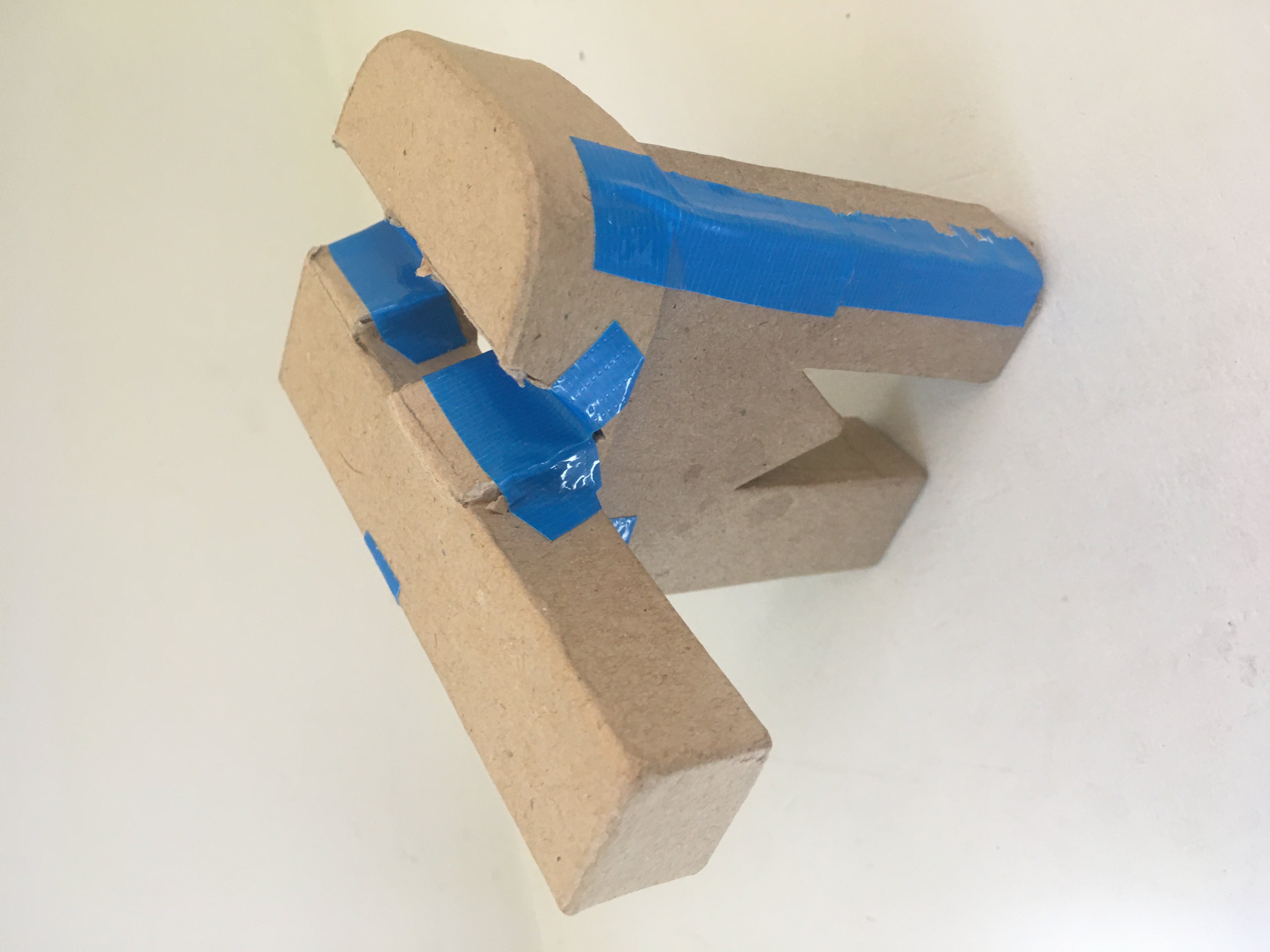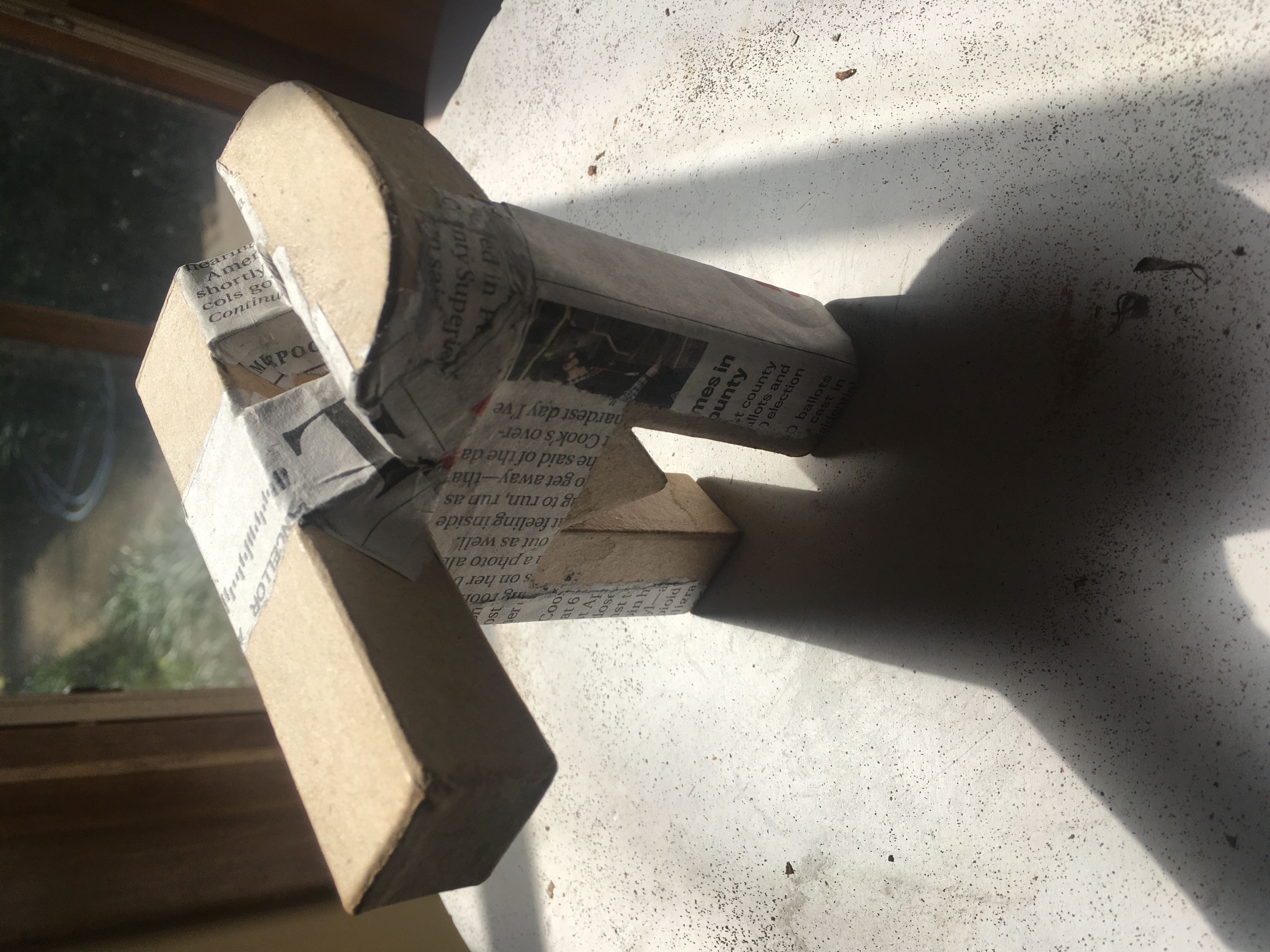Released in 1979, Douglas Hofstadter’s first book, the Pulitzer-Prize winning Gödel, Escher, Bach: An Eternal Golden Braid, is an expansive volume that explores how living things come to be from nonliving things. It’s about self-reference and emergence and creation and lots of other things. It’s well worth checking out.

For the cover of his heady tome, Hofstadter carved two wood-block objects such that their shadows would cast the book’s initials when lit against a flat backdrop. He went the extra step of working in the initials for the subtitle as well.
Earlier this year, I was inspired to emulate Hofstadter’s sculpture. I found a way to put the initials for my media-theory book-in-progress, The Medium Picture—TMP—into a similar configuration. This is one of my early sketches.

The sketches I did at least made the thing appear possible, so I started exploring physical options. After trying different materials and digging around craft stores, I finally found some letters that were about the right shape and would save me a lot of time toward the final object.

I was fortunate to find letters with similar proportions to the ones I’d been drawing. The first thing was to cut the M to make the P the top of the T. Like so:


After some papier-mâché tweaking, calk to round the leg of the M, and a coat of white paint, the object was ready to test.


Now that it physically existed, I knew the real test would be hanging it, lighting it, and capturing its shadows correctly. I built a contraption for just that out of things found around my parents’ house.

It was as sketchy as it looks. The object was suspended with two pieces of fishing line, and I had to turn off the air conditioning to get the thing to hang still for the picture. I found some pieces of foamcore in my sister’s old closet for the backdrop and gathered up tiny flashlights from all over the house.

With the LED flashlights propped and taped in place, this is the final set-up.

And this is the final shot. It’s not quite as intricate or as elegant as Hofstadter’s, but I’m pretty stoked on it. I think it will make a striking cover image and a fitting tribute to his work.
I belabored this process here because about half the people who see the final image ask me what software I used to make it. I know this could’ve been done digitally in any 3-D imaging suite, but I wanted to make it for real, just as Douglas Hofstadter had done.

